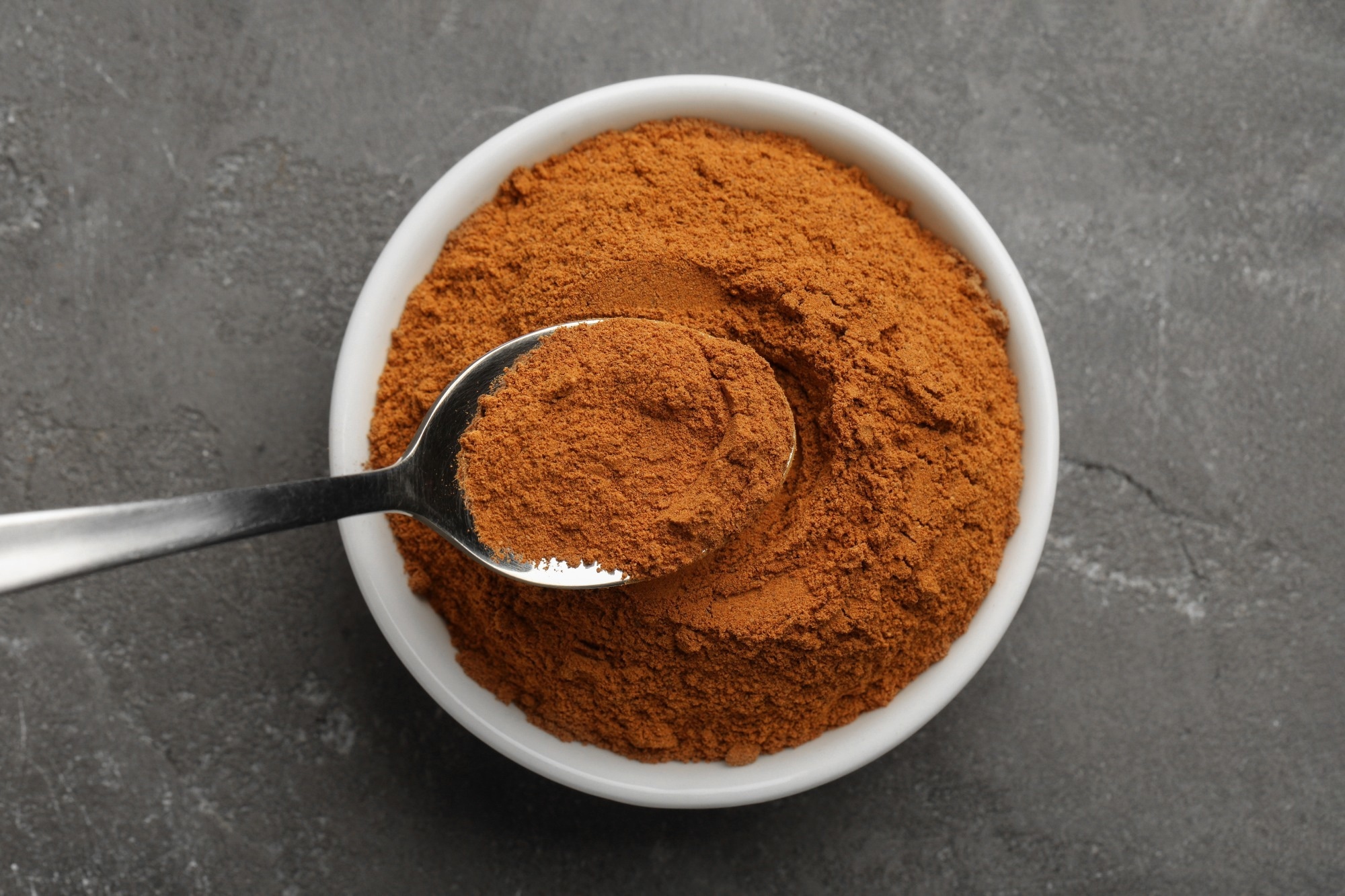Think you know what’s in your cinnamon? New research uncovers widespread adulteration and toxic risks, putting consumers’ health and trust on the line.
 Study: High rate of safety and fraud issues in commercially available cinnamon. Image Credit: New Africa / Shutterstock
Study: High rate of safety and fraud issues in commercially available cinnamon. Image Credit: New Africa / Shutterstock
In a recent study published in the journal npj Science of Food, researchers found high rates of fraud and safety issues in commercially available cinnamon.
Spices are among the most frequently adulterated food commodities. Cinnamon is one of the top imported spices in the European Union (EU), with China, Indonesia, Vietnam, Madagascar, and Sri Lanka accounting for over 99% of global production, and Vietnam being the primary supplier to the EU.
Cinnamon consumption is expected to increase, following trends of eating healthy and sustainable diets containing flavor-intensifying ingredients. The increased demand for cinnamon has already triggered price surges in Europe.
Ceylon cinnamon (Cinnamomum zeylanicum) is the highest quality cinnamon native to Sri Lanka. Of the four primary grades of Ceylon cinnamon, Alba has the highest quality. Cassia is a stronger-flavored, lower-quality cinnamon native to Myanmar.
Cassia cinnamon contains a liver-toxic compound, coumarin, present in low quantities or absent in Ceylon cinnamon. The growing demand for cinnamon may lead to supply chain issues, potentially fueling fraudulent activities and malpractices.
These practices may include the complete or partial substitution of Ceylon cinnamon with Cassia cinnamon or the adulteration of cinnamon bark with other plant parts or bulking agents.
While most studies have focused on analyzing markers (e.g., coumarin) present in different amounts in Cassia and Ceylon cinnamon, no holistic research has examined the integrity of commercially available cinnamon, including its safety, quality, and potential for multi-type fraud.
The study and findings
In the present study, researchers analyzed commercially available cinnamon to identify fraudulent practices and non-compliances. They purchased 104 cinnamon samples at retailers in Austria, Bulgaria, Belgium, Germany, France, Greece, Italy, Serbia, Malta, Sri Lanka, the United Kingdom, Spain, and Slovakia.
Thermogravimetric analyses were performed to estimate the total ash content, revealing that 20.7% of samples with a declared botanical or geographical origin (6/28) failed to meet international quality standards (ISO 6539/6538).
Ceylon cinnamon from Madagascar or the Seychelles is permitted higher ash limits (7%) than Sri Lankan cinnamon (5%), which complicates quality assessment when origins are not declared.
Ten samples violated EU lead limits (2 mg/kg), representing 9.6% non-compliance. EDXRF limitations prevented mercury screening, though FDA alerts note chromium risks (19 outliers, up to 20 mg/kg). Thirteen samples showed elevated sulfur levels, suggesting potential breaches of sulphite regulation.
Cassia cinnamon had higher coumarin levels than Ceylon, with 29.8% of samples posing potential risks to children under 10.
Elemental profiling revealed four Ceylon-labeled samples substituted with Cassia cinnamon (9% of Ceylon samples). Six samples contained high camphor (indicating root substitution or C. camphora adulteration), supported by elevated inorganic elements (Al, Si, Ti, Cr, Fe, Zr) that may originate from root material or processing contamination.
q-PCR detected rice in one sample and flagged six others for extraneous species (onion, fenugreek, white mustard), though these findings are indicative and require validation with species-specific primers.
Conclusions
Only 33.7% of the cinnamon samples were found to be free of fraud, safety concerns, or quality issues. Ceylon cinnamon had the lowest rate of non-suspicious samples (only 5% clean) due to its premium price.
Beyond Cassia substitution, 11.4% of Ceylon samples suggested root adulteration. Elevated inorganic elements (e.g., aluminum up to 2,000 mg/kg) may reflect soil contamination, root adulteration, or processing during milling, with 1.5g exceeding safety limits for children.
The study highlights that cinnamon fraud extends beyond species substitution to include bark dilution with roots or seeds, inorganic contaminants, and undeclared species, necessitating multi-technique screening (EDXRF + HS-GC-MS).